INTRODUCTION
Thanks to professor @alphafx for another Steemit Academy lecture delivered this Week 11 on holding and trading of cryptocurrencies. It is quite interesting going through the different types of wallets that can be used in storing coins as well as considering focal points on whether to hold or trade with your coins.
My submission in fulfillment of the homework task covers the type of wallet I would prefer, how I carry out spot trading on Binance and whether I would prefer to either hold or trade my coins.
I would now answer the questions raised.
1 Do you hold any coins? Talk about the wallet type you prefer/would prefer holding in
THE COINS I HOLD

Actually, I have not explored the option of digital wallets in storing my coins. Moreover, I only earn coins from the Steemit social media. I transfer them to Binance, roqqu or huobi and simply sell them off. However, I am currently exploring the possibility of crypto trading as a way of investing my earnings. As such I would be considering the option of a wallet to store my coins except the ones which I intend to use as start-up investment capital for my crypto trading plan. So, the only coins I hold right now are Steem.
THE WALLET TYPE I WOULD PREFER HOLDING MY COINS IN
Really, I have taken time to study the different types of cryptocurrency wallets for storing coins. At the end of the day I have come to the conclusion that should I accumulate so much cryptos from my intended trading venture then I would store some of it for long-term in a cold wallet while the rest will be left in the exchange for the purpose of crypto trading.
It is quite understandable that unlike traditional banking institutions that may pay you back in the case of, let's say, bank theft or anything of the sort that could result in customers losing their funds, crypto wallets have no options for paying you back should you lose your funds, may be, due to hacking or loss of private keys or access keys. Hence, the function of acting as both the insurer and safe-keeper of my funds are left at my own discretion. Therefore, I strongly prefer the paper type cold wallet option for the storage of my coins.
Unlike hot wallets which are left online and very susceptible to the activity of hackers, cold wallets, especially the paper type which I prefer, are stored offline. The Bitfinex August 2016 hack where over $72 million worth of BTC was lost to hackers on the platform should serve enough as a deterrent to people who might want to explore hot wallets, even the multi-signature type, for storing large amounts of cryptos.
I consider the paper type cold storage to be the safest because all I need do is to simply generate and store in a piece of paper the public keys and private keys of my wallet. These keys when generated offline can be printed as a QR code which can always be read from any computer anywhere in the world. Then, you can make other copies of the paper and store offline. The entire process of creating paper type cold wallet is quite interesting and can be found here.
2.With screenshots, show how to perform spot trading on any pair of your choice.
MAKING A SPOT TRADE WITH BTC/USDT PAIR ON BINANCE
- Visit binance.com to login with your details
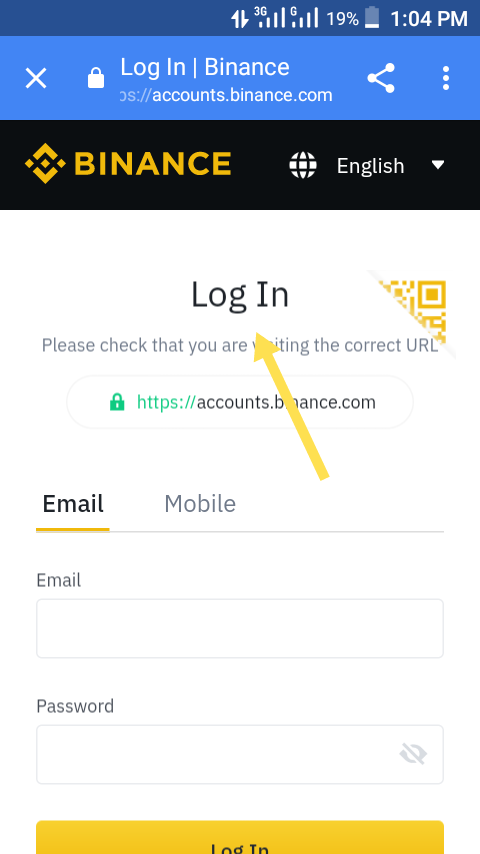
- Input your email and password
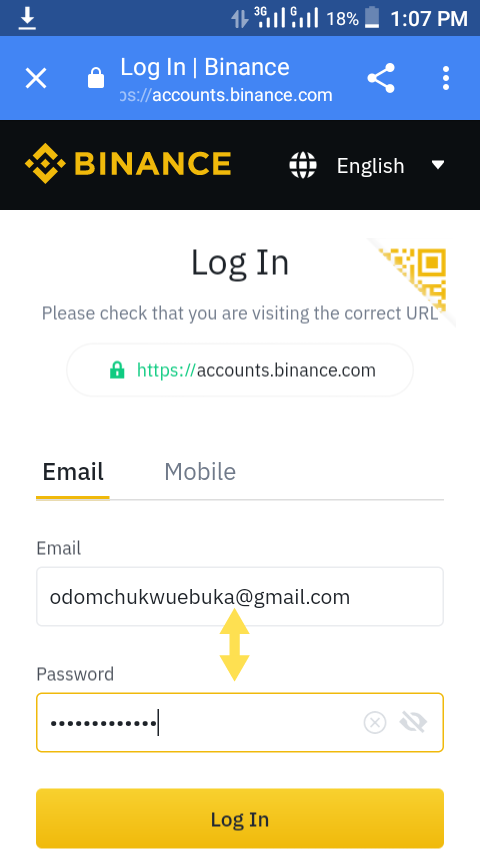
- Click on 'login'
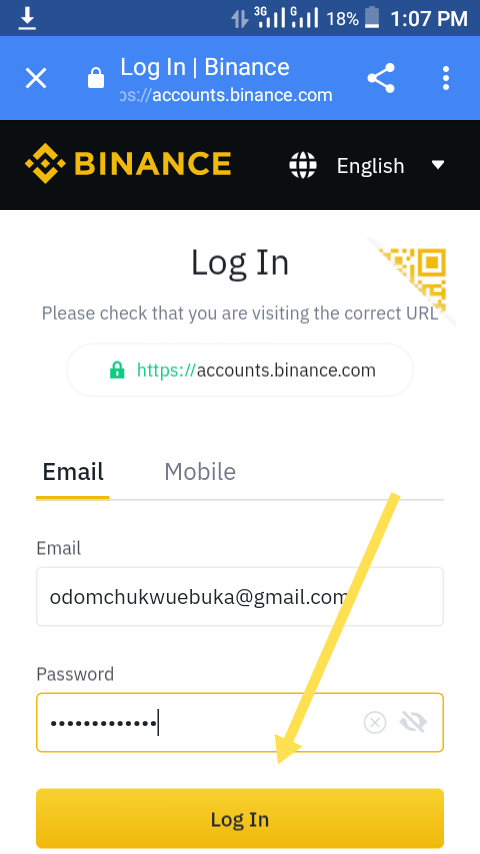
Pass the security verification
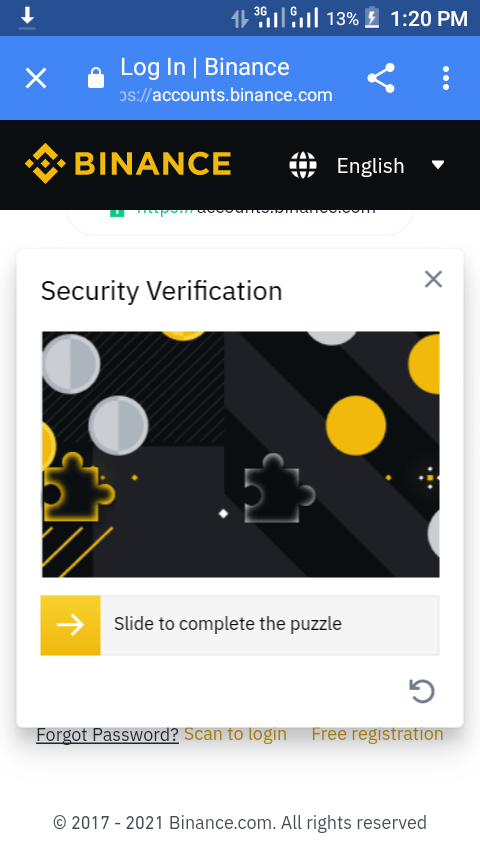
Having logged in, select trade as indicated below
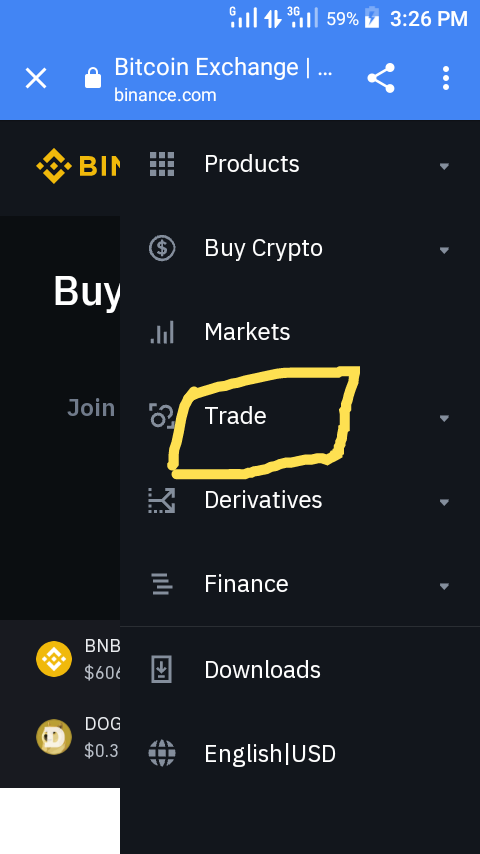
- From the drop-down menu below it, select 'classic' to reveal the underlying spot trade interface
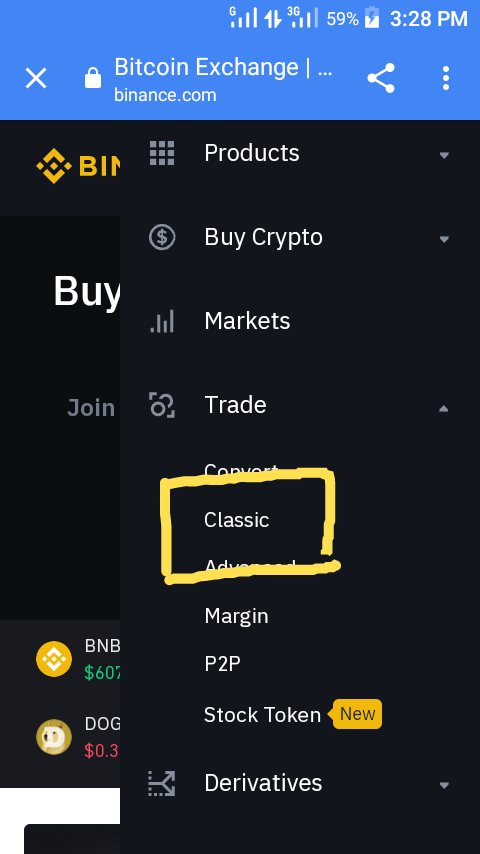
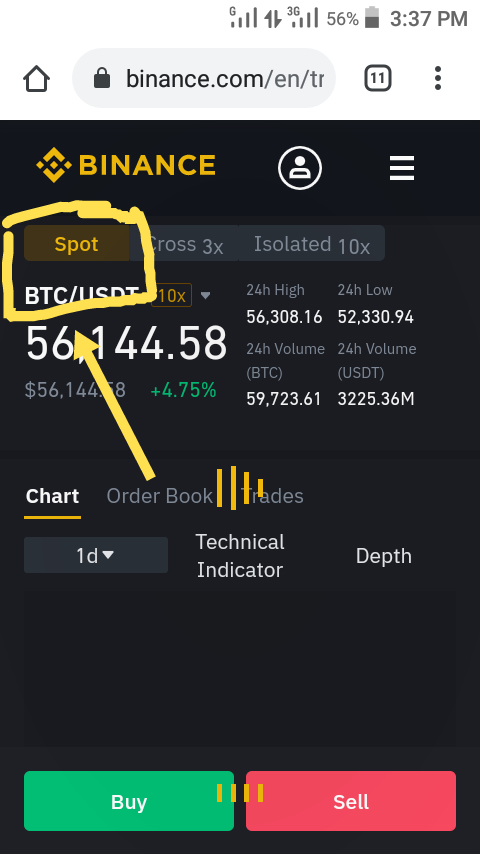
OR
Login with the app
Note: the app does not support screenshots at the login stage
- Click on 'Trades' after logging in
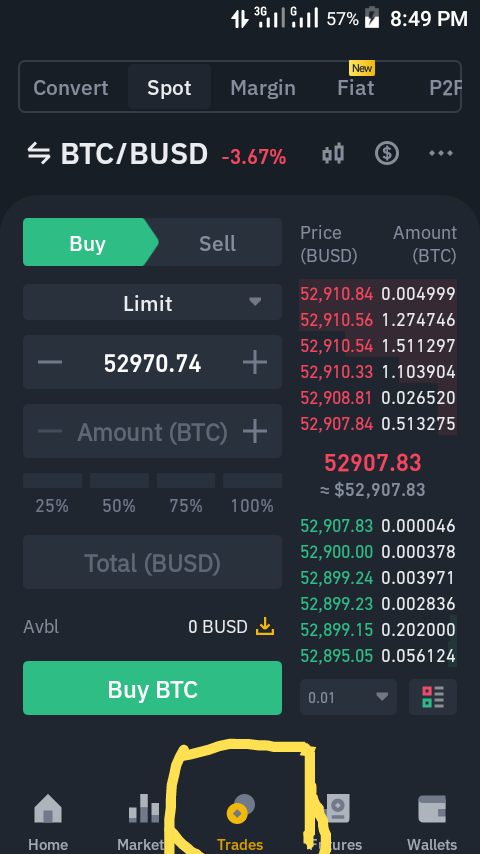
- Select 'Spot'
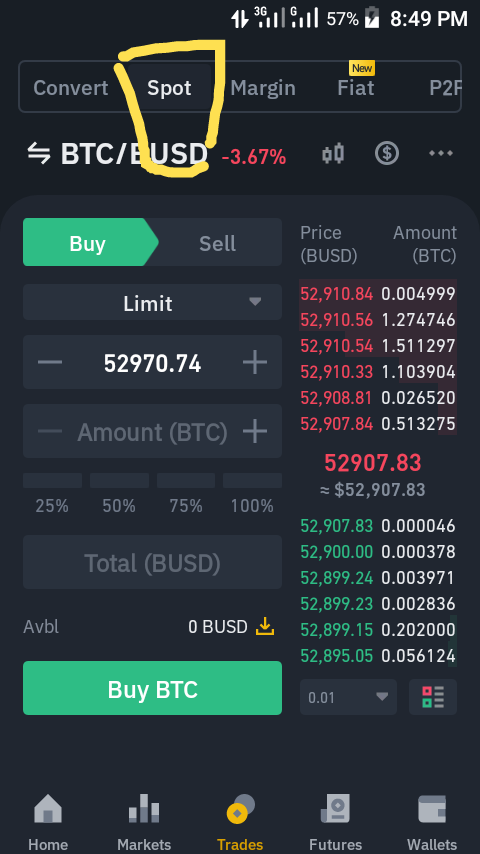
- Click on the icon below to view more trading pairs
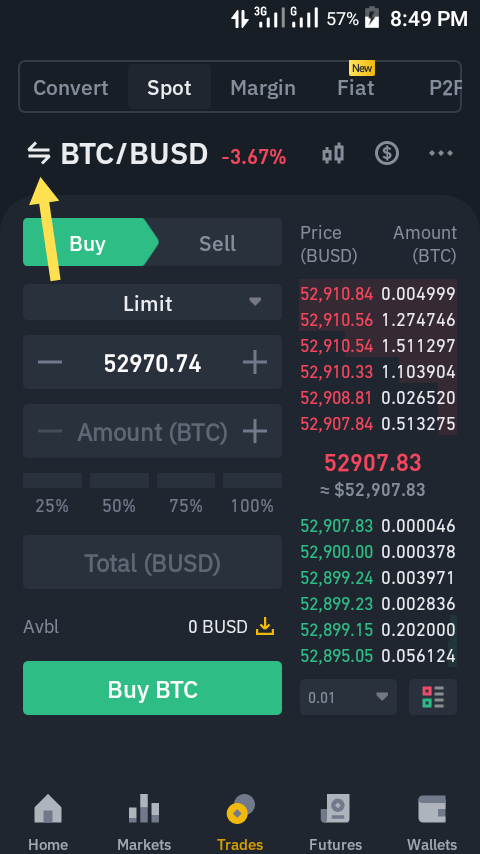
Here there is also an option to choose the seed coin
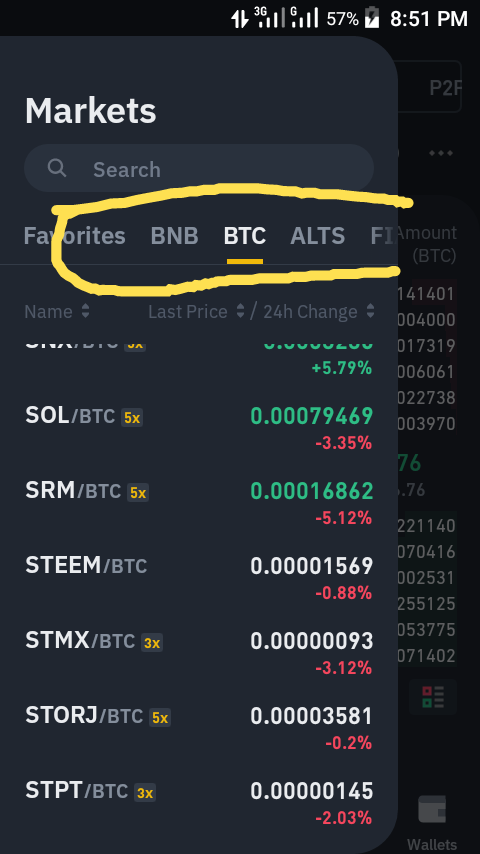
Actually, in this case I intend trading on Steem and BTC (that is, using my available BTC to buy some Steem tokens)
- So, I select Steem/BTC
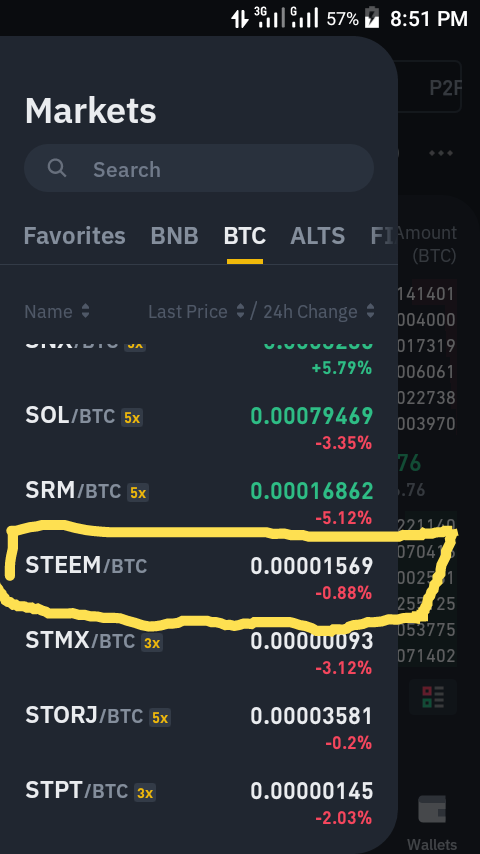
- Then I input the BTC price at which I want to buy
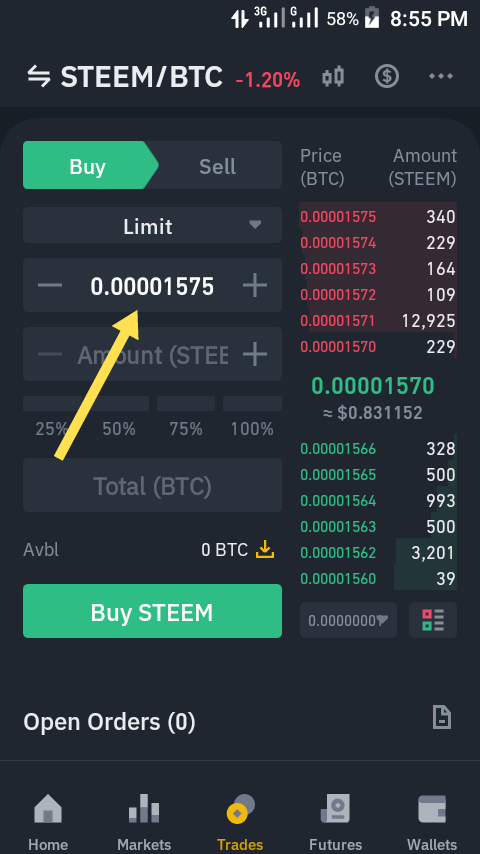
- I now choose the number of Steem tokens I wish to buy
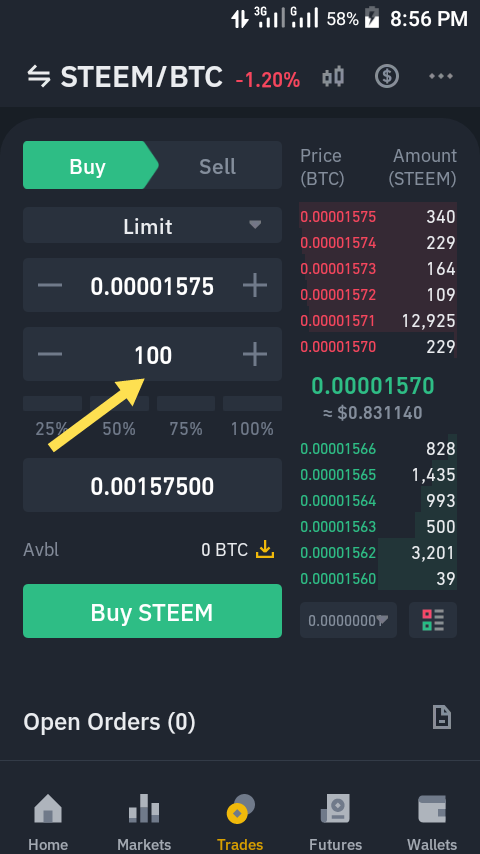
The total price I have to pay is calculated automatically
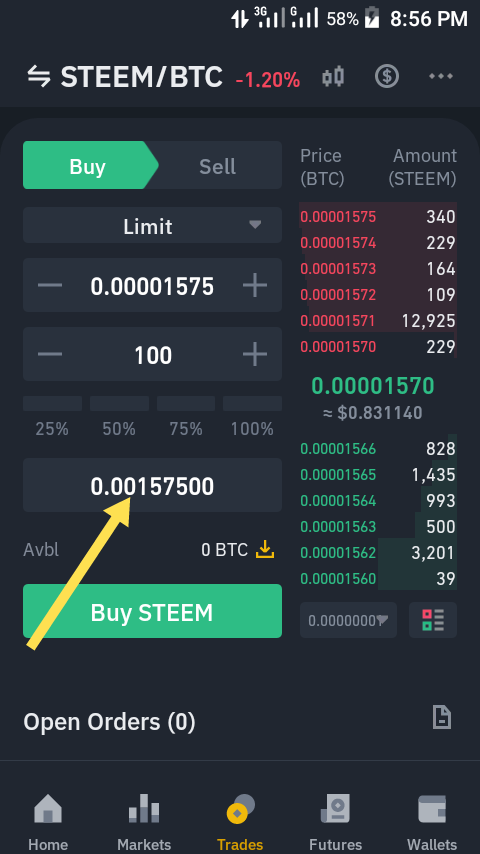
- I then choose the percentage of the 100 Steem tokens I would like to actually purchase
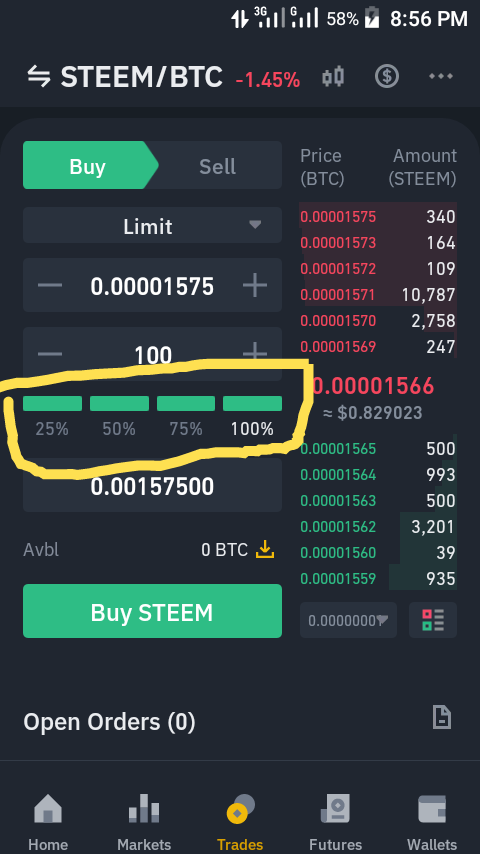
Payment will be made from my available BTC balance
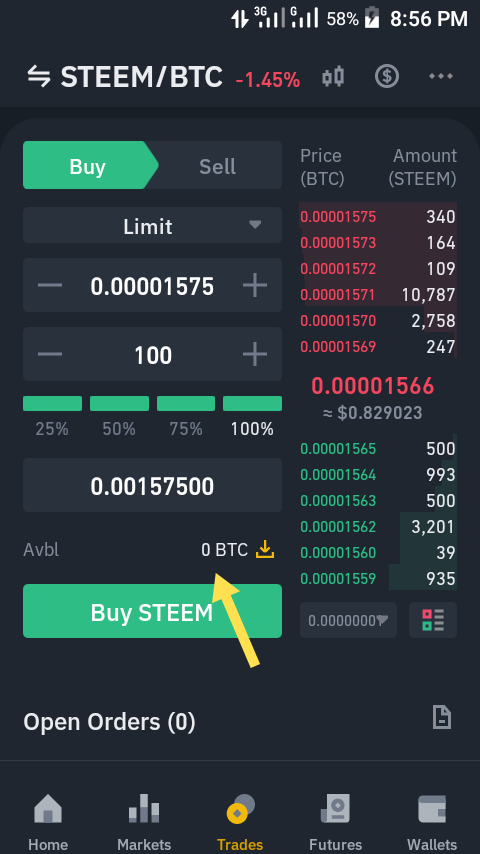
- Finally, I click 'Buy Steem' To open the order
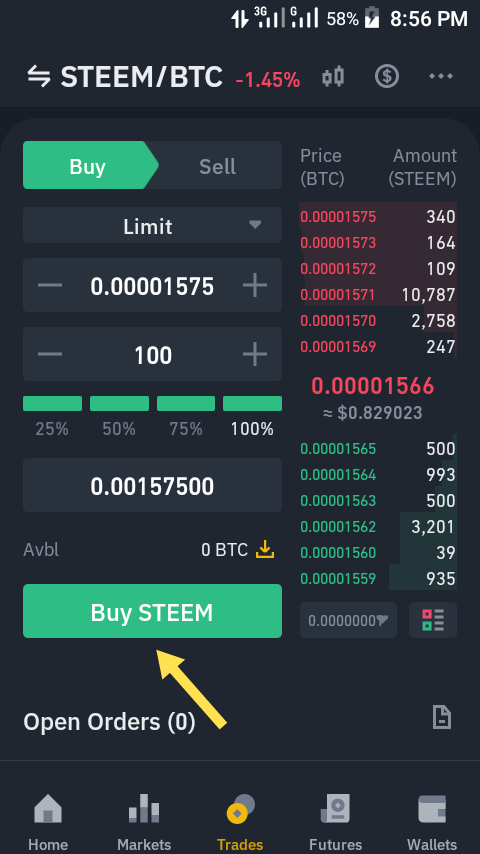
3.Holding or trading, which do you prefer and why?
BETWEEN HODLING AND TRADING: WHICH IS PREFERABLE FOR ME?
Hodling
'Hodling' is a gerund obtained from the misspelling of the popular word 'hold'. Simply, it refers to a situation whereby a crypto investor buys a coin and holds it or decides rather not to sell it or engage it in a trade expecting its value to increase in the near future. The investor watches days turn to weeks, weeks to months and even months to years and decides to do nothing in expectancy of bullish times. This strategy has its own demerits in that even the times when the market might go bearish and one could sell and unarguably make some profits in the next bullish times a hodler could still insist on holding.
To hodle in the right or most profitable way, an investor should look out for times of low in order to undertake or enter a position in such periods. When the market goes bullish again he could decide to skim off some profit or gain and wait to re-enter when the prices fall again. In this way hodling can become more profitable than just buying and waiting for the long run.
TRADING
In the world of cryptocurrency it will not be difficult to see opportunities of making even more than 10% gain. This could even occur maybe just a few moments or hours from the time you click the 'Buy' button. This is quite unlike traditional forex trade or stock exchange. Learning how to take advantage of this volatility in cryptocurrencies will put you in a more gainful position than a mere hodler in the long run. One could decide to undertake such gainful ventures as spot trading if the capital is available. Moreso, such other options as leveraging with margin and futures trading can be explored in the most cautious way in order to increase one's crypto holdings.
WHAT I WOULD PREFER
To cut the long story short I would simply prefer trading over hodling. Actually, this may not be in its entirety as sometimes I might want to hodle some coins especially when the market looks uncertain technically. However, it is important that I learn the rightful way to trade in order to minimise losses. I would intentionally undertake carefully calculated trades and may not insist on taking so much at a time. This is what is known as swing trading.
Sometimes, I might just have to act of a hodler in that I would enter a position in times of low and just wait for the high times to skim off gains and profits. Also, I can undertake such ventures as fixed savings and leveraging (with caution, though). In staking and leveraging I will make very good use of stop-losses, limits and take profits as a way of trying to cushion the effect of a wrong prediction. However, while I am taking little gains (or losses, as the case may be) I would also be on the watch out for such times as periods of 'runs' for even greater gains.
CONCLUSION
- Holding coins in this modern world of cryptocurrencies could be a great investment
- While the coins with which you trade can be left at the exchanges, storing - in the most secure way - the ones earned as profits would be necessary
- Knowing when to hold or trade is quite important in increasing ones crypto holdings
- While trading one should exercise caution and calculate risks carefully
